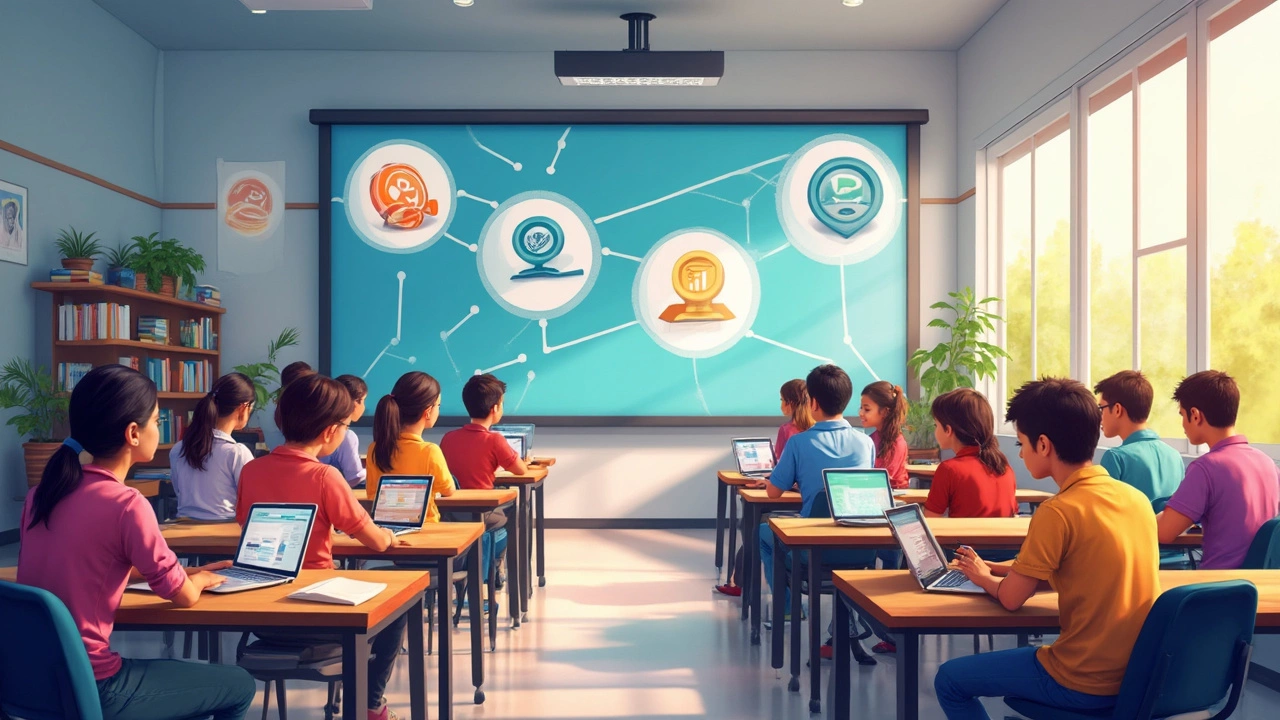Blended Learning: A Practical Guide
When talking about blended learning, the mix of traditional classroom teaching with digital content and activities. Also known as hybrid education, it lets students enjoy the best of both worlds. eLearning, online courses, videos, and interactive modules delivered via the internet serves as the digital half, while virtual learning, live webinars, virtual classrooms, and simulated labs provides real‑time interaction. Together they create a flexible learning ecosystem that adapts to different schedules, learning styles, and resource constraints.
Why does blended learning matter today? First, it boosts engagement—students can revisit video lessons at their own pace and still discuss concepts in person. Second, it cuts costs; schools reuse digital assets instead of printing endless handouts. Third, it prepares learners for modern workplaces where remote collaboration is the norm. Blended learning also dovetails with initial training, the first‑stage onboarding program for new hires, allowing companies to blend on‑site orientation with online compliance modules. This hybrid approach speeds up skill acquisition while keeping training budgets in check.
Key Components of a Successful Blended Learning Model
Start with a clear learning objective. Ask yourself: What should learners achieve by the end of the course? Once the goal is set, choose the right mix of face‑to‑face sessions and eLearning modules. For technical topics—like coding basics or data analysis—use hands‑on labs during classroom time and reinforce concepts with video tutorials online. For softer skills—such as public speaking or English fluency—schedule live practice workshops and supplement them with virtual speaking drills. The balance isn’t fixed; it shifts based on content complexity, learner feedback, and available technology.
Technology plays a starring role. A robust learning management system, software that hosts courses, tracks progress, and delivers assessments acts as the backbone, linking classroom calendars with digital resources. When the LMS integrates with video‑conference tools, teachers can launch a live quiz in a virtual classroom and instantly see results on their dashboard. Analytics from the system reveal which eLearning videos are re‑watched, helping instructors tweak in‑person activities for maximum impact.
Assessment strategies must also evolve. Traditional exams still have a place, but blended learning thrives on continuous feedback. Short online quizzes after each video, followed by group discussions in the classroom, create a loop of knowledge check‑ins. Peer reviews during virtual breakout rooms let students critique each other's work, fostering deeper understanding. This mix of formative (online) and summative (in‑person) assessments ensures no learning gaps slip through.
Implementing blended learning can feel daunting, but many institutions start small. Pilot a single course, replace one lecture with an interactive video, and gather student reactions. If learners report higher confidence and instructors notice better class participation, expand the model to other subjects. Remember, the goal isn’t to digitize everything overnight; it’s to blend where it adds real value.
Looking ahead, blended learning will keep evolving. Emerging tools like augmented reality (AR) labs and AI‑driven tutoring bots will deepen the digital side, while project‑based classroom work will become more collaborative. By staying adaptable and focusing on learner outcomes, educators and trainers can turn blended learning into a lasting advantage—not just a trend.
Below you’ll find a curated collection of articles that dive deeper into each facet of blended learning—from monetizing eLearning and self‑taught coding pathways to the differences between virtual learning and eLearning. Explore practical tips, real‑world examples, and step‑by‑step guides that will help you design, implement, and refine your own blended learning experiences.
eLearning Models: 5 Types That Shape Modern Online Learning
This article unpacks the five major eLearning models that shape how we learn online. Get clear explanations, real-life examples, and practical benefits for each model. Find out which is best for different needs, from company training to solo study. Discover what works, what doesn’t, and how these models impact everyday learners. Perfect for students, teachers, and anyone curious about smarter online education.
